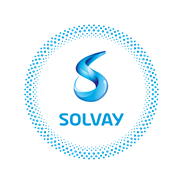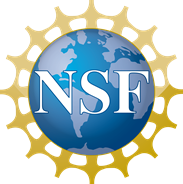
November 26 - December 1, 2023
Boston, Massachusetts
Symposium Supporters
2023 MRS Fall Meeting & Exhibit
Symposium EL03-Ferroic Materials and Heterostructures
Recent progress in the synthesis of ferroic and heterostructures has led to new application paradigms for beyond-CMOS computing schemes. Further, non-trivial structures and the possible interplay between charge, spin, lattice, and orbital degrees of freedom in strongly correlated systems leads to a wide range of quantum phenomena not observed in conventional semiconducting compounds. These include polar order, magnetoelectricity, and systems with multiple complex order parameters (multiferroics as an example). Further, recent advances in synthesis have enabled the tailoring of symmetry and competing interactions to yield topologically non-trivial electronic and magnetic structures. The significant advancements in the area have generated world-wide excitement and a realization that deeper understanding, rational design, and control of the ferroic behavior of materials is necessary for efficient, scalable, and quantum information and communication technologies.
This symposium largely focuses on ferroics and related boundaries and textures rather than excitations. Albeit abstracts that investigate switching kinetics and dynamics in these systems are encouraged. For the materials synthesis, a particular focus will be placed on the growth of controlled ferroic materials and interfaces, heterostructures, and nanostructures. The organizers encourage the submission from academic, national lab, and industry researchers who seek to advance the state-of-the-art in bulk and thin film synthesis, engineering of ferroic order with strain, interfaces, defects, disorder and scaling/dimension, spectroscopic and time-domain measurements of ferroic behavior. The topical list for this symposium reflects the needs and challenges towards the enhancement and control of trivial and non-trivial ferroic order in materials. Invited speakers will span the breadth of these interdisciplinary topics to accelerate fundamental understanding for the realization of unprecedented physical properties.
This symposium largely focuses on ferroics and related boundaries and textures rather than excitations. Albeit abstracts that investigate switching kinetics and dynamics in these systems are encouraged. For the materials synthesis, a particular focus will be placed on the growth of controlled ferroic materials and interfaces, heterostructures, and nanostructures. The organizers encourage the submission from academic, national lab, and industry researchers who seek to advance the state-of-the-art in bulk and thin film synthesis, engineering of ferroic order with strain, interfaces, defects, disorder and scaling/dimension, spectroscopic and time-domain measurements of ferroic behavior. The topical list for this symposium reflects the needs and challenges towards the enhancement and control of trivial and non-trivial ferroic order in materials. Invited speakers will span the breadth of these interdisciplinary topics to accelerate fundamental understanding for the realization of unprecedented physical properties.
Topics will include:
- Magnetic, multiferroic, and magnetoelectric materials
- Heterostructures of, and interfaces in, thin films
- Ferroelectrics and antiferroelectric materials for devices
- Domain-wall nanoelectronics
- Topological textures in magnetic and polar materials
- Two-dimensional and freestanding functional materials and thin films
- Theory of polar textures and switching
- Device demonstration and integration
Invited Speakers:
- Laurent Bellaiche (University of Arkansas, USA)
- Manuel Bibes (Centre National de la Recherche Scientifique, France)
- Felix Cassanova (CIC nanoGUNE, Spain)
- Michele Conroy (Imperial College London, United Kingdom)
- Catherine Dubourdieu (Helmholtz-Zentrum Berlin, Germany)
- Manfred Fiebig (ETH Zürich, Switzerland)
- Eric Fullerton (University of California, San Diego, USA)
- Megan Holtz (Colorado School of Mines, USA)
- Bharat Jalan (University of Minnesota, USA)
- Asif Khan (Georgia Institute of Technology, USA)
- Lane Martin (University of California, Berkeley, USA)
- Dennis Meier (Norwegian University of Science and Technology, Norway)
- Tianxiang Nan (Tsinghua University, China)
- Olga Ovchinnikova (Oak Ridge National Laboratory, USA)
- Silvia Picozzi (Consiglio Nazionale delle Ricerche, Italy)
- John Plombon (Intel, USA)
- Ramamoorthy Ramesh (University of California, Berkeley, USA)
- Caroline Ross (Massachusetts Institute of Technology, USA)
- Tiffany Santos (Western Digital Corporation, USA)
- Nagarajan Valanoor (University of New South Wales, Australia)
- Ruijuan Xu (North Carolina State University, USA)
- Di Yi (Tsinghua University, China)
Symposium Organizers
Morgan Trassin
ETH Zürich
Department of Materials
Switzerland
John Heron
University of Michigan
Materials Science and Engineering
USA
Johanna Nordlander
Harvard University
USA
Bhagwati Prasad
Indian Institute of Science
India




-2.tmb-mtg_rel_ad.png?Culture=en&sfvrsn=a4240c09_1)

























